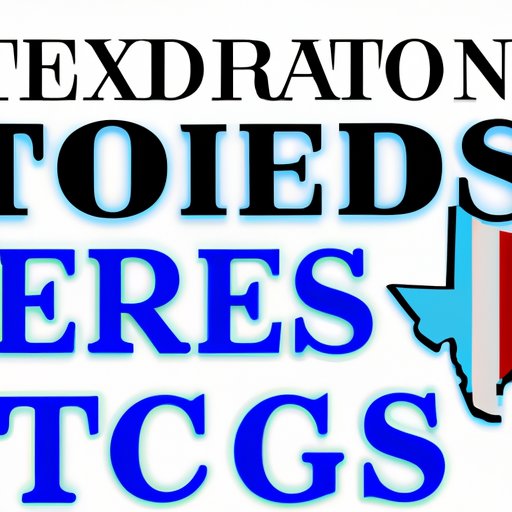
Where Does Texas Rank in Education?
Education is a key aspect of any society, and the quality of education can significantly impact the future of individuals and communities. In Texas, there have been concerns regarding the state’s position in terms of education, specifically on how it compares with other states in the USA. This article will explore where Texas ranks in education, the factors that influence its ranking, and potential solutions to address the current issues.
Comparison with Other States
According to the latest data from the National Assessment of Educational Progress (NAEP), Texas ranks below the national average in academics. In 2019, the state’s average math score for fourth and eighth-grade students was lower than the national average. Similarly, average reading scores for eighth-graders were also lower than the national average, while fourth-graders performed slightly better than the national average.
Compared to other states, Texas ranks 42nd in national education rankings, with low scores in K-12 achievement and school funding equity contributing to the low ratings. Factors that might be responsible for Texas’s low academic ranking include poverty, limited health care access, discrimination, and learning disabilities. According to reports, the high poverty percentages adversely impact reading and maths proficiency.
Academic Performance of Schools
While Texas ranks low academically overall, academic performance varies significantly from school to school. Researching the academic performance of schools in Texas, most schools are performing well but some leave a lot to be desired. According to ratings from Great Schools, many schools in Texas are above average, with ratings ranging from 7-10. However, the ratings for low-income schools in urban areas are far lower than the overall score.
Despite students in low-income neighborhoods reporting to school with fewer resources, they still face overcrowded classrooms and overworked teachers. It’s worth noting that Texas has an average of 19 students per teacher, higher than the national average of 16 students per teacher. The state is also grappling with ongoing teacher shortages, with some districts struggling to fill vacancies for positions in math, science, and bilingual education.
Impact of Funding
Education funding is another issue that has sparked debate in Texas. Inadequate funding for schools has made it difficult for districts to attract and retain experienced teachers, make improvements to school facilities, and support students, especially those who come from low-income families.
The Texas Education Agency (TEA) states that the state spent approximately $11,692 per student during the 2018-2019 school year, which is lower than the national average of $12,756. The state’s school funding mechanism relies on property taxes, and though it’s not independent of minimum bases, some districts have more significant resources as a result of these taxes than others.
Educational Policies
The Texas Legislature recently passed HB 3, the historic school finance bill that provides nearly $6.5 billion in funds to Texas schools over the next two years. Moreover, the state of Texas has an ambitious educational reform program that promotes the implementation of policies to improve the quality of teaching and the outcomes of public education.
The legislation and policies supporting education in Texas are far-reaching and comprehensive, including several quality interventions and restructuring of curricula to make learning more relevant, measurable, and accountable.
Future of Education in Texas
The future of education in Texas is bright, with many institutions already using emerging technologies to change the way they teach and learn. However, some policymakers are concerned that the gap between high-performance and low-performance schools may become more significant. These concerns raise the question of how to close the gap to ensure all students can achieve at high levels.
The solution may lie in policies that encourage collaboration between schools and districts, provide additional resources for underperforming schools, and offer incentives to attract and retain highly qualified and experienced teachers in high-need areas. Another solution is the implementation of tutoring and mentoring programs that support students who might be falling behind in their classes.
Conclusion
In conclusion, Texas’s ranking in education is a significant challenge for the state, and this has been raised in several forums in different quarters. Implementation of institutional changes and policies aimed at improving the quality of teaching in Texas should focus on ensuring that students from all backgrounds have equal access to quality education.
There is still a vast opportunity to improve education in Texas, and there is much to be done to provide each student with the tools and skills they need to succeed. That said, while the road to improvement will be bumpy, it is essential to implement policies for reform since education is one of the most tangible ways to create positive changes in a society.




